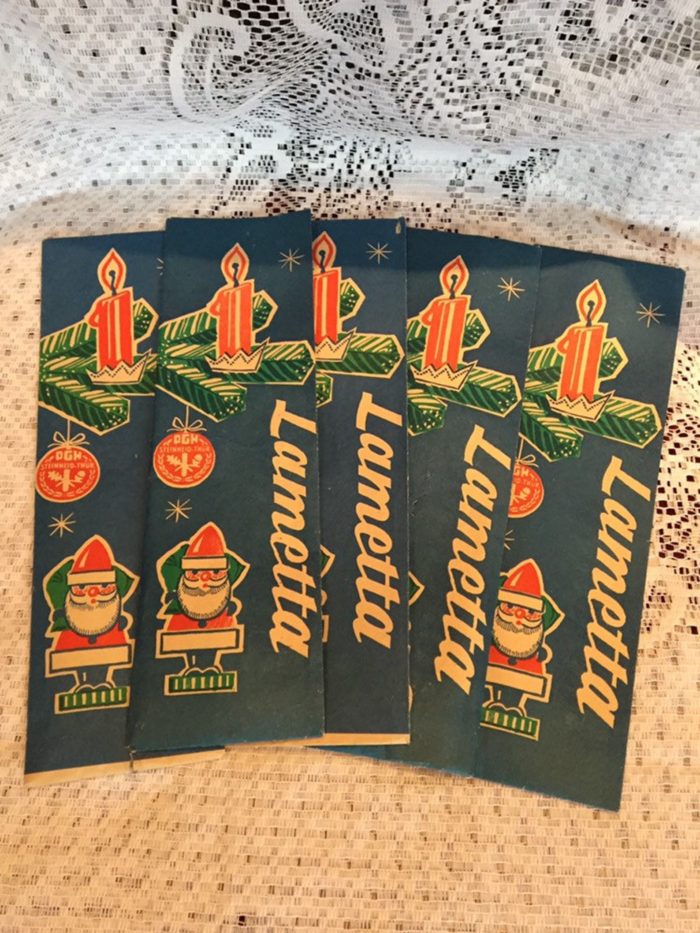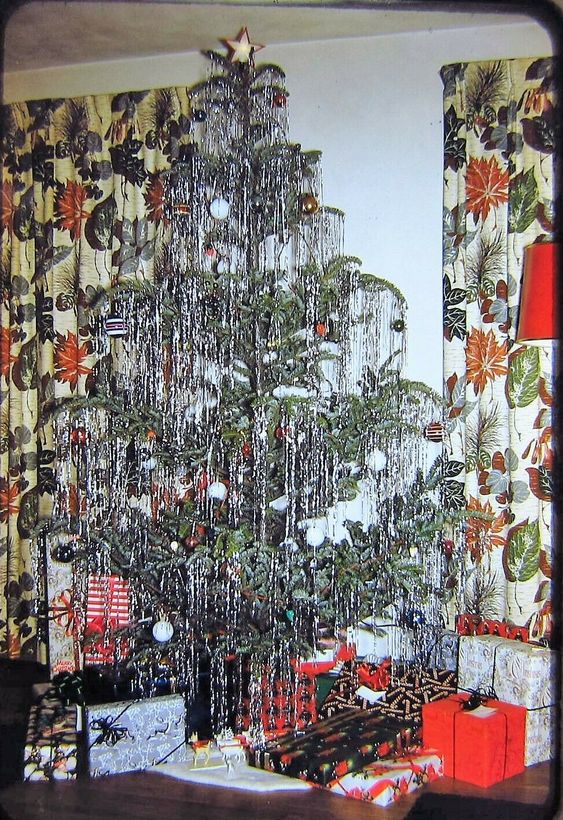
- Should we use old tinsel or new tinsel?
- Shall we call it tinsel, lametta, rain, or icicles?
- Should we use just a little or lots and lots of it?
- Shall I place it on the tree one strand at a time or throw it on in clumps?
- Save it for next year? Toss it out with the tree?
- So many dilemmas surround tinsel!
Many of us decorate our Christmas trees every year with tinsel, but why? Who thought tinsel up in the first place? And, why, for heaven’s sake, hang it on an evergreen tree at Christmas? Let’s check out some facts about tinsel!
The word “tinsel” comes from the French word, estincelle, meaning “spark.” As to who invented tinsel, no one really knows, or at least remembers. We do know, however, that it was first used in Germany in the 1600s. It wasn’t that shiny plastic stuff we can buy these days; it was actually made from shredded silver. At first, the silver was hammered so that it was very thin and then cut into long thin strips. Before the 19th century, tinsel was actually used for adorning sculptures rather than Christmas trees. It was also often used in churches to simulate the starry sky above statues of the Holy family and the Christ child.

It is also unknown which genius thought to drape some over the branches of an evergreen. Tinsel is thought to have made its first public appearance in England in 1846. Queen Victoria and Prince Albert were pictured in the Illustrated London News, standing with their children around a Christmas tree decorated with tinsel, candles, and small ornaments. Because of Queen Victoria’s popularity, decorated trees became the height of fashion in Europe, Britain, and in the East Coast American societies.

These early Christmas trees were also decorated with real, lighted candles, and the silver, combined with the flickering flames and light from the hearth, created a twinkly effect that gave a similar effect as the modern day string of lights. Sparkle, sparkle! Silver tinsel did have its drawbacks. Because it was made of silver, it tarnished, often before Christmas had even arrived. The smoke from the lighted candles did not help, either. They caused the tinsel to turn a black color on one side, which didn’t look very attractive. Besides, tinsel made from all silver was expensive and usually only the more wealthy families could afford it.
By the early 1900s, mainstream Americans were looking for less costly ways to decorate the Christmas trees in their homes. Manufacturers started producing tinsel made of aluminum and copper. This tinsel gave the same festive sparkle as the silver tinsel, but for a fraction of the price. Plus, this tinsel could be used year after year. But, even this tinsel wasn’t perfect. The aluminum paper in the tinsel was extremely flammable, which was a terrible choice for Christmas trees that were still decked out in candles. That problem was solved, however, when World War I began and all of the copper production went towards the war effort. Tinsel disappeared from the Christmas trees in most households.
It wasn’t gone for long. Tinsel manufacturers believed that tinsel deserved a place on Christmas trees. After all, it really did make those evergreens sparkle and shine! Makers worked hard to come up with something that could be hung in every home. It needed to look just right and be inexpensive enough for everyone to purchase it. The manufacturing choice was lead.
Lead pushed new breath into the gasping tinsel industry. Soon lead tinsel was a standard Christmas decoration along with ornaments and electric lights. It actually became so popular in the 1950s and ‘60s that lots of people believe that tinsel was a ‘mid-century fad’ rather than a tradition that had been around as long as the custom of Christmas trees themselves. It was a hit for sure. Lead tinsel was beautiful. You had to put it on the tree one strand at a time. It didn’t tarnish and it would hang straight down, giving the tree that dripping glittering icicle effect. Perfect!


This popular form of tinsel was considered one of the safer forms of decorations to have in every home. In fact, newspaper articles on holiday safety even touted tinsel as being “fairly” safe and that “even if the kiddies decided to swallow it, it will cause no problems or poisoning.” Hold it right there! As we know today, tinsel made from lead wasn’t “fairly safe” at all. Lead is poisonous. In the 1970s, the US government began setting limits on how much lead could be in any product. Even though tinsel manufacturers had switched to using lead foil to keep the tarnish proofing and the sparkle, by Christmas 1972 lead tinsel was off the shelves.




Back to the drawing board! So, if the tinsel we can buy and use today isn’t made of silver, copper, aluminum, or lead, what is it? Today, tinsel is made of polyvinyl chloride…PVC plastic. Machines shred the shiny ribbons of plastic to make those long wispy strands that still add a bit of sparkle and shine to our Christmas trees. Brite Star, a Philadelphia based company, is responsible for about 80% of the tinsel on the market, according to The Wall Street Journal. It began production in the mid-’50s. The company claims to have produced enough tinsel to reach the moon and back! It isn’t as elegant as the kind made from real metals and, because it is so lightweight, it’s less likely to stay put. However, the newest tinsel still brings that vintage “bling” to the holidays without poisoning your family!

After all of that, we still have not answered those questions. How much? What do we call it? One strand at a time or toss on a handful? Take it off and use it next year or toss it out with the tree? Well, I suppose it’s like everything else. It’s up to you, with maybe a little bit of your parents’ voices whispering in your ear. For me it means…old tinsel…there is no such thing as “too much”…we call it tinsel or icicles…one strand at a time…and it all comes off one strand at a time, put back in the box and used again next year. How about you?
